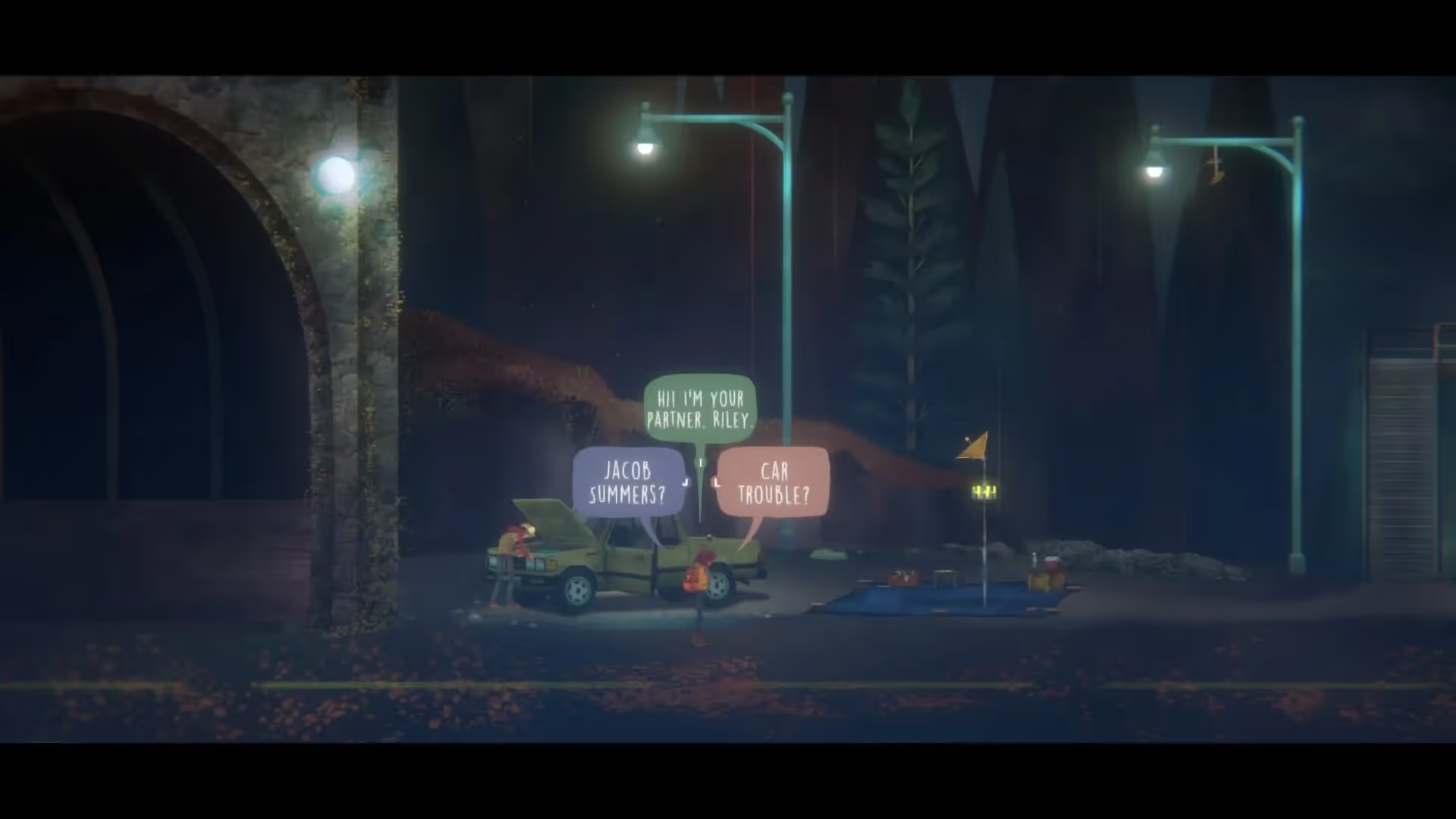PC
Oxenfree was a story about relationships as much as it was about the supernatural, a mature coming-of-age tale that felt grounded thanks to cracking voice acting and an intriguing plot. Seven years after its release, Lost Signals proves to be a sequel worthy of its predecessor. While it revisits many of the mechanics of the first game, it also ties together loose threads while introducing you to a new cast of likeable characters.
Riley Poverly has been hired to plant transmitters at points along her coastal hometown of Camena for an environmental research group, to gather data and work out the cause of mysterious signals disrupting the town’s electrical equipment. Joining her on the task are Jacob Summers, who you first meet trying to fix his broken vehicle, and Evelynn, who acts as your guide around the town via a walkie-talkie.
It’s a smaller cast than before, but this allows you to get to know them better. Be in no doubt: this is primarily a walking simulator with branching dialogue. If you didn’t like the first game, there’s nothing here that will likely endear you to its sequel. All that walking does mean that conversation is free-flowing, though. Riley and Jacob are older than the characters who explored Edwards Island and that maturity provides ample opportunity to reminisce about their life choices and the events that led to them coming to Camena. The conversations continue seamlessly between locations, which feels very naturalistic, and there are optional stopping points where you can rest and chat more to expand on the narrative. Edwards Island is sometimes visible from Camena’s highest points and plays a role here, cleverly integrating the spooky setting from the first game into Lost Signals’ story.

The new walkie-talkie mechanic offers opportunities for side quests, should you wish to take them. It also lets you figure out what’s happening at your own pace, by asking different people on different channels for assistance and learning more as you do so. Otherwise, everything feels much as it did before, only slicker and more streamlined. Using a radio to triangulate and interact with rifts feels far less clunky, and the map has been designed to point you in the right direction(s) without holding your hand too much. Traversal around the town is straightforward, although at times you’ll be backtracking when you find a path blocked until later in the game. This may cause some teeth-gnashing, but the characters are so winsome that spending a bit more time with them doesn’t feel like much of a chore.
The antagonists this time around are a cult called The Parentage, a group who are introduced slowly but gradually become more key to the phenomena afflicting the town. Your interactions with them, and with Jacob and the other characters you’ll come across, are key to how the story pans out. There are three endings to find over its eight-hour runtime; just like the first game, decisions you make — even small ones — might impact the outcome. Conversations usually offer two or three different responses and the ones you choose might close off or open up further story options much later in the game.

The audio-visual experience is exquisite. There is still an 80s vibe permeating throughout and Stranger Things fans will no doubt love the feeling of small town Americana, but it doesn’t feel like a pastiche either. The graphics have improved on the original in every respect and are complemented by a soundtrack that feels ominous and urgent in equal measure. The story flirts with both horror and sci-fi, but in the same brilliantly matter-of-fact way that the first game nailed. What’s even more wonderful is how organic everything feels. The excellent voice actors take the incredibly naturalistic dialogue and run with it, turning a game that so easily could have fallen into hokey genre riffs into a brilliant paranormal tale where their reactions feel utterly believable. The horror elements combine with Groundhog Day-style do-overs to keep you unsettled and questioning exactly which reality you’re experiencing is the “correct” one.

If there are any negatives to note, they’re a symptom of the gameplay. Traversing the island is almost boringly simple, requiring little more than a button press to hop between ledges or drop ropes down to open up paths. Scaling walls is equally easy and it becomes apparent very early on that there is little danger in your exploration. The walkie-talkie and radio elements balance this out, however. You’ll become so engrossed in learning about Camena and the neighbouring island — as well as the inhabitants — that the traversal of the landscape becomes almost cathartic. Going off the beaten path is recommended if you want to get the most from the characters’ backstories and anyone who is likely to buy this will probably do so. Newcomers may be a bit perplexed at its slightly plodding nature and slow reveals, but then Oxenfree 2 isn’t a game for people looking for high-octane thrills. It’s an exquisitely plotted delve into the psyche, with more chills than its predecessor and an overall experience that improves on pretty much everything that went before.
You can subscribe to Jump Chat Roll on your favourite podcast players including:
Let us know in the comments if you enjoyed this podcast, and if there are any topics you'd like to hear us tackle in future episodes!



